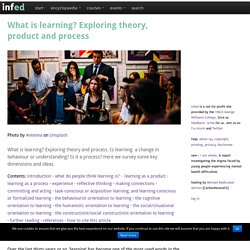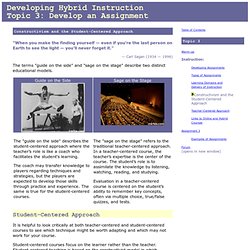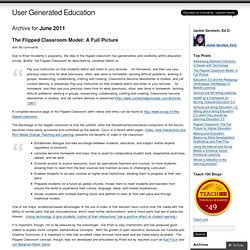

La taxonomie d'Anderson et de Krathwohl. Learning theory: models, product and process. Photo by Antenna on Unsplash Contents: introduction · what do people think learning is?

· learning as a product · learning as a process · experience · reflective thinking · making connections · committing and acting · task-conscious or acquisition learning, and learning-conscious or formalized learning · the behaviourist orientation to learning · the cognitive orientation to learning · the humanistic orientation to learning · the social/situational orientation to learning · the constructivist/social constructivist orientation to learning · further reading · references · how to cite this article See, also, What is education? Over the last thirty years or so, ‘learning’ has become one of the most used words in the field of education.
Constructivism and the Student-Centered Approach. "When you make the finding yourself — even if you’re the last person on Earth to see the light — you’ll never forget it.

" The terms "guide on the side" and "sage on the stage" describe two distinct educational models. Student-Centered Approach It is helpful to look critically at both teacher-centered and student-centered courses to see which technique might be worth adapting and which may not work for your course. Student-centered courses focus on the learner rather than the teacher. Student-centered teaching is based on the constructivist model in which students construct rather than receive or assimilate knowledge.
June. Due to Khan Academy’s popularity, the idea of the flipped classroom has gained press and credibility within education circles.

Briefly, the Flipped Classroom as described by Jonathan Martin is: Flip your instruction so that students watch and listen to your lectures… for homework, and then use your precious class-time for what previously, often, was done in homework: tackling difficult problems, working in groups, researching, collaborating, crafting and creating.
Classrooms become laboratories or studios, and yet content delivery is preserved. Flip your instruction so that students watch and listen to your lectures… for homework, and then use your precious class-time for what previously, often, was done in homework: tackling difficult problems, working in groups, researching, collaborating, crafting and creating. Mindmaps.